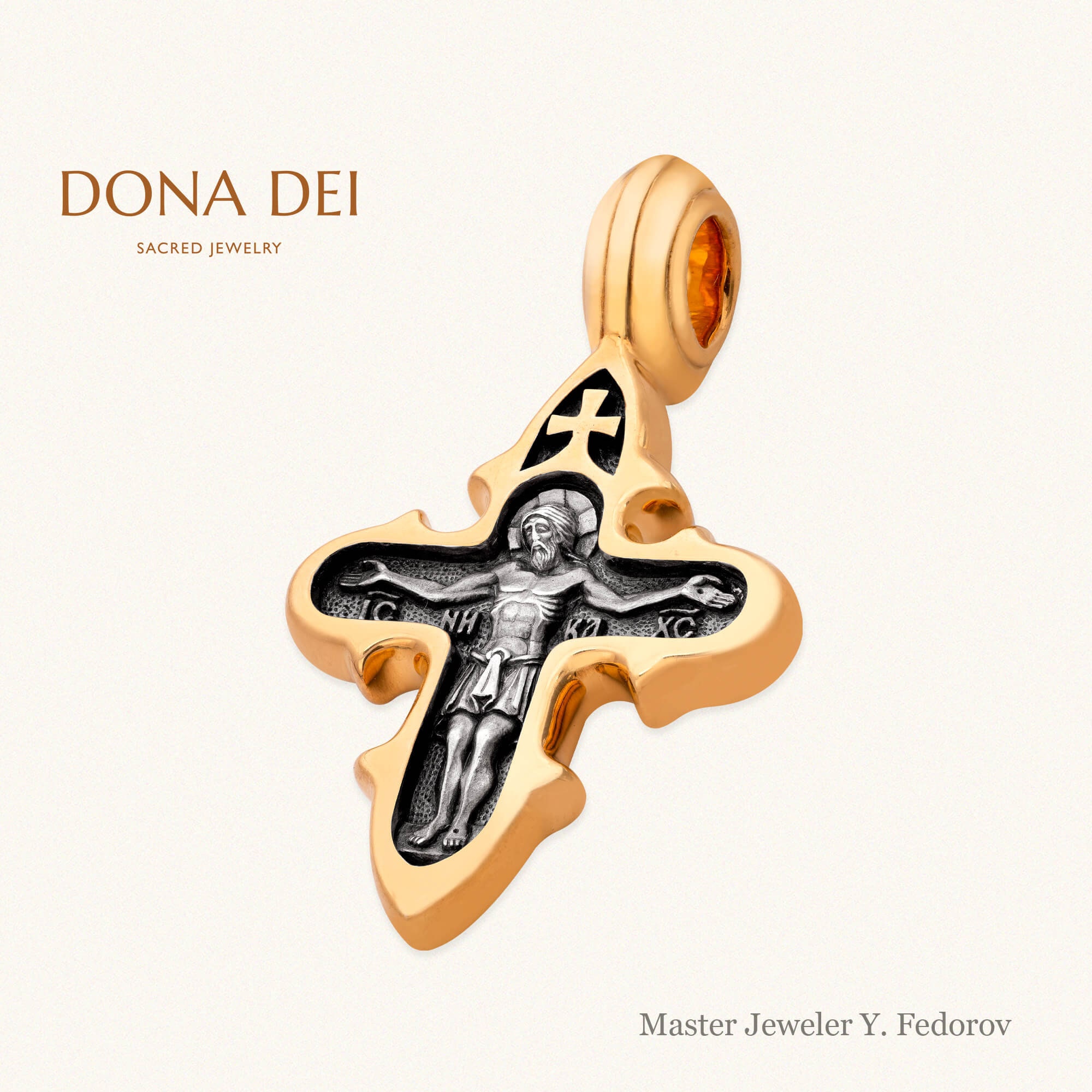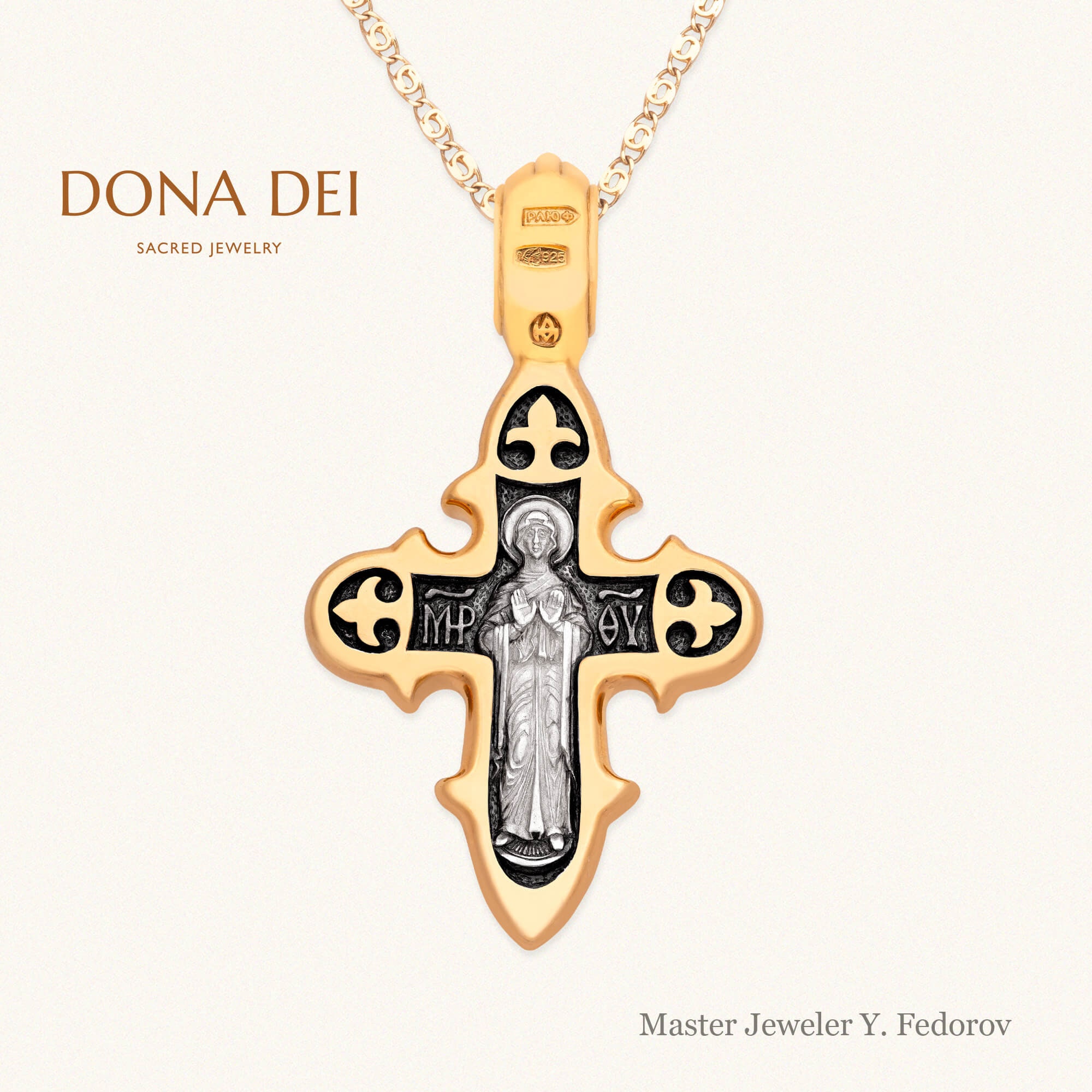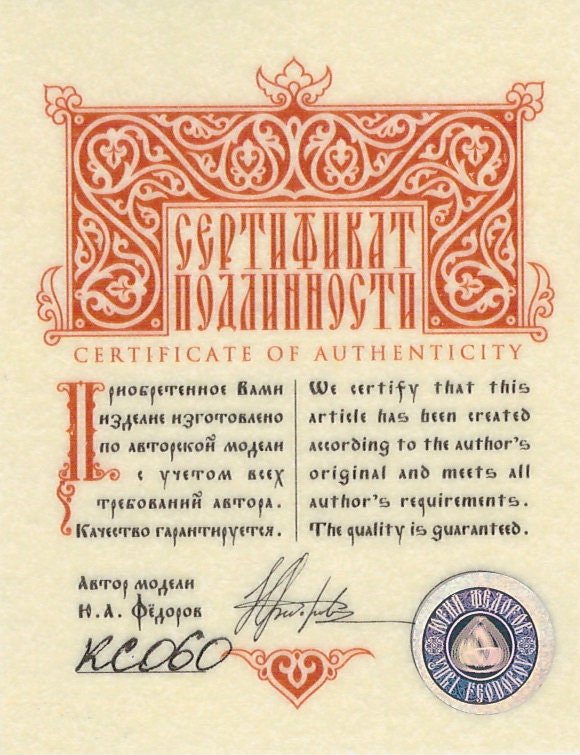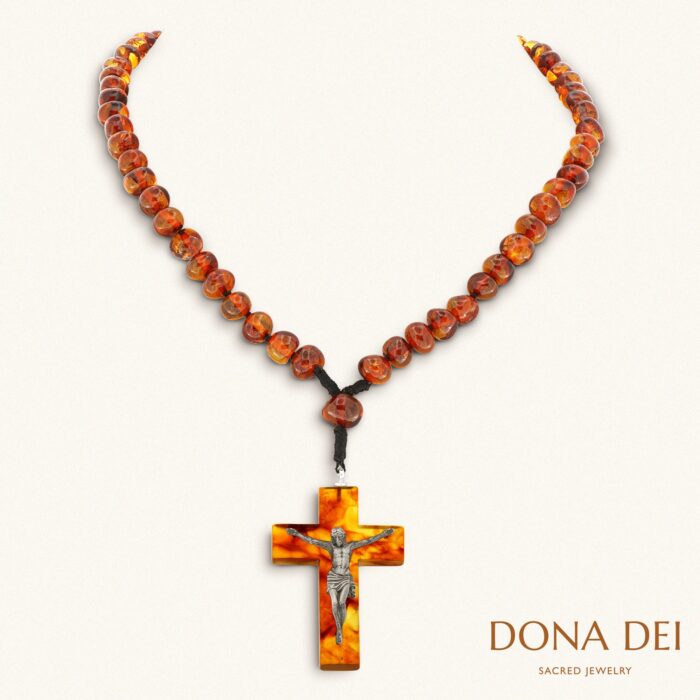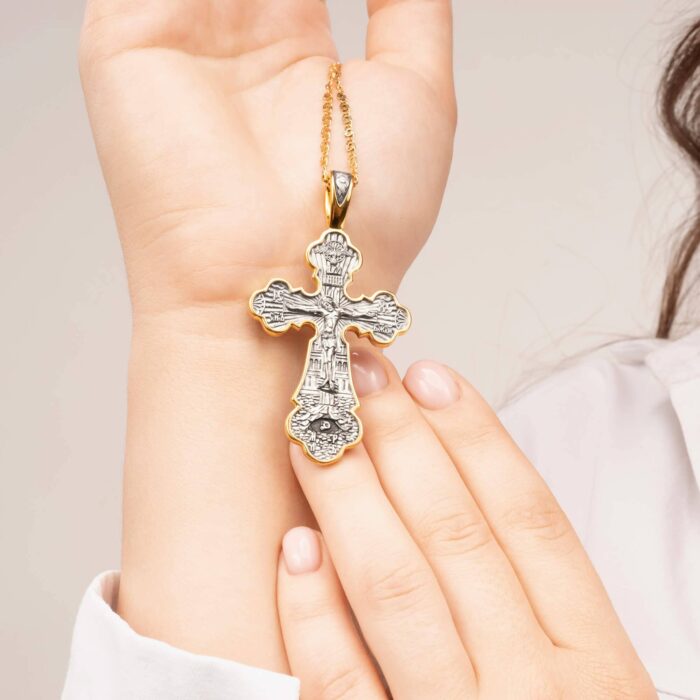Description
Size: 31×17 mm / 1.22×0.67 in
Weight: ~4.7 g / ~0.14 ozCross pendant "Crucifixion. Theotokos Assunta"
The cross "Crucifixion. Theotokos Assunta" is small but elegant. It is a beautiful gift for anyone who wishes to have a wearable cross pendant with an icon ...of the Theotokos. The gilding around the edges and their floral shape give the pendant a festive touch without detracting from the simple design. As a result, the pendant can be worn on display for any occasion, whether formal or casual. In addition, owing to its small size, it is easy to conceal under one's clothes.
The symbolism of the cross pendant "Crucifixion. Theotokos Assunta"
This small cross pendant is four-pointed. The vertical bar has rounded ends, whereas the ends of the horizontal bar are slightly sharpened. Each of the ends has two extensions that convert them into ternary lily flowers ("krinos" in Greek). This blossoming of the cross marks it as the Tree of Life. The immovable top part is circular in shape.
The front of the cross contains a relief image of the Crucifixion against a recessed background. The figure of Christ is straight and His head is somewhat bowed to the right. This iconographic image of the crucified Savior is often referred to as the Triumphant Christ. In it, the Savior's death on the Cross does not obscure His Triumph over the conquered hell and death. Perhaps for the same reason, the actual wood of the cross is not depicted. The only exception is the lowermost part – the foot, which served as a sign of greatness in Byzantium. Thus, the presence of the foot indicates that the Savior is the King of Glory. "Lift up the Lord our God, fall to His feet and worship the foot of His cross, for it is sacred", sings the Psalmist (Ps. 98:5). The same verse is read during the liturgy on the Feast of the Exaltation of the Holy Cross. In this item, we have followed the same ancient iconographic tradition.
Moreover, our item has one more important detail: the image of the cross over the Saviour's head. On some ancient encolpia, its role is performed by the protruding upper part of the cross. The latter is known as the "board of Pontius Pilate" and is depicted as a Greek cross of regular proportions. However, occasionally the cross over the head of the crucified Christ is a separate and complete image in its own right. In some cases, this cross even has elements of blossoming. This particular item represents the Holy Cross and forms a symbolic composition along with the Crucifixion. This establishes a connection with the rite of the Exaltation of the Precious and Life-Giving Cross. The Savior Himself performs the rite. He appears to be erecting His Own Cross for us to adore. In addition, the Cross of the Lord reveals the connection between Christ and Adam. Typically, underneath the Cross of Calvary, one can see Adam's head, which stands for the redemption of the original sin. In cases like ours, when the cross is positioned over the Savior's head and the head of Adam is absent, Christ also represents Adam. The Savior is regarded as the New Adam, who redeemed the original sin and revealed to mankind the path to eternal life. The connection between the Holy Cross and Adam is mentioned repeatedly during the church service held on the feast of the Exaltation. During the actual rite, the priest stands the Cross on his head, not only to repeat the actions performed by Patriarch Macarius of Jerusalem but to indicate that his head stands for Adam's head. Thus an extremely laconic composition of the Crucifixion, through immersion in a church ceremony, allows one to fully convey both the kenosis (self-renunciation) and the greatness of the Savior, as well as the triumph of His victorious weapon – the Precious and Life-Giving Cross.
On the back inside a small niche, one can see the Theotokos with Her palms open and positioned at Her chest. The image is referred to as the Theotokos Assunta ("Ascended"), after the definition provided by scholar N.P. Kondakov. It is often found on the icons of the Ascension and serves as a double for the Theotokos Oranta. The gesture made by the Blessed Virgin signifies prayerful vigil, rather like the posture of the Theotokos Oranta. However, in contrast to the Theotokos Oranta, the Theotokos Assunta is less solemn and majestic. Instead, this image of the Blessed Virgin Mary tends to be perceived from a more soulful, emotional perspective. It shows a Theotokos who is humbly and tenderly confessing Her faith and is open to accepting the Lord's will.
At the ends, the three bars are decorated with images of lilies (called "krinos" in Greek). The lily motif is widespread in Byzantine and ancient Russian ornaments. It is an ancient symbol of life and the renewal of nature. As such, it serves as a symbol of the Annunciation, the spiritual renewal of the world, and the coming of the Savior. Also, considering its ternary shape, the lily is used as a symbol of the Holy Trinity. Since the lily is a symbol of innocence and purity, it is used to denote the Virgin Mary. Thus, the threefold image of the lily on the reverse is a symbolic complement to the image of the Blessed Virgin standing in prayer before the Lord, and enhances the idea of the Cross in Bloom inherent in the lily-like shape of the ends – the Cross understood as the Tree of Life.
Technical details of the cross pendant "Crucifixion. Theotokos Assunta"
The cross is made from grade 925 silver and decorated with blackening. The ternary flower-like ornaments surrounding the figure of the Theotokos and the cross crowning the Savior are plated with 24kt gold. So is the top part of the cross and the floral decorations around the edges.
The cross is medium-sized, with dimensions of 1.22×0.67 in (31×17 mm), and quite light, with a weight of 0.14 oz (~4.7 g). As a consequence, it is comfortable to wear both on top of one's clothes or underneath.







